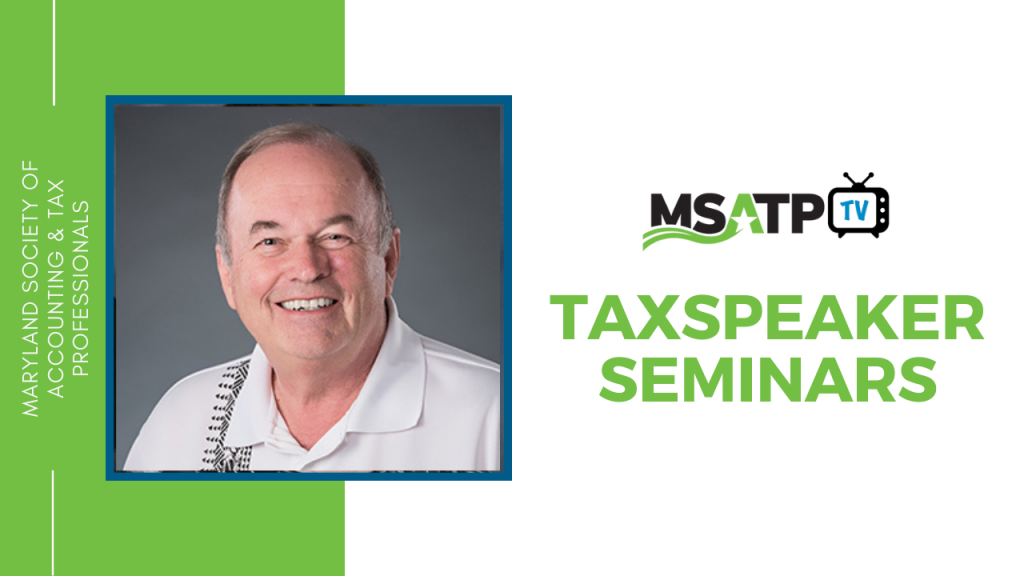Employee Retention Credit
The IRS has released Notice 2021-49 regarding the application of the rules for the Employee Retention Credit under the American Rescue Plan which extended the credit for wages paid before January 1, 2022, and answering some questions that practitioners have asked with regard to the application of the credit. However, the ERC does not have a large utilization, so Congress is looking at ending the credit as of September 30, 2021, as part of the infrastructure legislation for all employers other than Recovery Startup businesses.
Eligible Employers:
All employers, including tax-exempt employers, are eligible to take the credit as long as the employer meets the qualifications. There are limits as to which wages will be qualifying depending on the number of full-time employees, however.
Qualifications:
In order for a business to be qualified to take the credit, the business must meet one of the two following rules:
- Fully or partially suspended due to orders from an appropriate governmental authority limiting commerce, travel, or group meetings (for commercial, social, religious, or other purposes) due to COVID-19. Only wages paid during from the date the restrictions are put into place until the date the restrictions are lifted are qualified wages.
- Substantial decrease in gross receipts – Notice 2021-23
-
- 2020 – 1st of the quarter where gross receipts are less than 50% from same quarter of 2019 to last day of quarter where sales are more than 80% of the same quarter of 2019
-
- 2021 – any quarter where gross receipts are less than 80% of same quarter of 2019 or using the alternative method, if the prior quarter’s gross receipts were less than 80% of the comparative quarter of 2019, then the quarter will count. Using the alternative method, if a quarter in 2021 is qualified, the next quarter is automatically qualified. The Notice affirms that using the alternative method election is on a quarter-to-quarter basis. For 2021, if the employer was not in business in same quarter of 2019, then they would compare to 2020.
-
- Recovery startup businesses, under Notice 2021-20 are only qualified under these rules for the 3rd and 4th quarter of 2021. The business must have started operations after 2/15/2020 and their average gross receipts must be less than $1,000,000. These employers cannot exceed $50,000 in total credit per quarter if qualifying under these rules. There is no limit to the credit if the business qualifies under the full or partial suspension of operations or decline in gross receipts. In addition, a Recovery Startup business is allowed to use all qualified wages without the limitation on the number of Full Time Employees. Recovery startup businesses are subject to the aggregation rules under Notice 2021-20.
Eligible Wages:
Employers with over 100 Full Time Employees (employees who work on average 30 hours per week or more) in 2020 (500 Full Time Employees in 2021) only have qualified wages for the Employee Retention Credit to the extent that the wages are paid to employees not to work. (Health care costs are still qualified.)
Employers with less than 100 Full Time Employees (500 in 2021), Recovery Startup Businesses, or Severely Financially Distressed Employers are allowed to use all wages as qualified wages.
Severely financially distressed employers are those businesses whose decline in gross receipts are less than 10% of those in 2019. These employers are not subject to the qualified wage limitation imposed on large employers.
No wages are allowed if they were used for PPP forgiveness, the Work Opportunity Credit, or Paid Sick and Family Leave credits. For the 3rd and 4th quarter only, wages used for the Shuttered Venue Operators Grant, Restaurant Revitalization Grant).
Qualified Wages include cash tips reported by employees when the tips exceed $20 in a month. However, IRS says there is no prohibition against taking the ERC and the credit under 45B for cash tips.
Maximum credit:
- 2020 – 50% of eligible wages and qualified health care costs up to $10,000 for the year, maximum credit $5,000 per employee per year – wages paid between March 13 and December 31, 2020, inclusive.
- 2021 – 70% of eligible wages and qualified health care costs up to $10,000 per quarter, maximum credit of $7,000 per employee per quarter
Owners, Spouses and Related Individuals
The wages paid to individuals who are related parties under Code Section 51 are not qualified for the Employee Retention Credit whose wages do not qualify for ERC include: majority owners, family members who are employed, and most spouses.
The IRS is using Code Section 267 attribution to disqualify wages paid to spouses if the owner and/or spouse have any living close relatives, whether the relatives work for the business or not. The only exception to allowing a spouse’s wages to be qualified is where neither the owner nor the spouse have any close living relatives. This prohibition is for majority owners (more than 50%) of corporations and other entities.
Minority Owners can potentially have their wages qualify for the ERC, but again, if they are related to any of the other owners by marriage or blood, then they could be deemed to be more than 50% owners.
IRS Notice 2021-49 Owner/family wages and ERC Qualification
| |
Do not Qualify for ERC |
Qualify for ERC |
| Schedule C/F filers: |
|
|
| Owner of Schedule C or F: owner has or does not have living ancestor, descendent or sibling (living relatives from here forward) |
X |
|
| Spouse of Sch. C or F owner-owner has living relatives |
X |
|
| Spouse of Sch. C or F owner-owner does NOT have living relatives |
|
X |
| Child, grandchild, parent or sibling of Sch. C or F owner |
X |
|
|
Form 1065 Filers-LLC’s and Partnerships |
| >50% owner, owner has or does not have living relatives |
X |
|
| 50% or less owner, owner has or does not have living relatives |
X |
|
| Spouse of >50% owner, with living relatives |
X |
|
| Spouse of >50% owner, no living relatives |
|
X |
| Spouse of 50% or less owner |
|
X |
| Child, grandchild, parent or sibling of >50% owner |
X |
|
| Child, grandchild, parent or sibling of 50% or less owner |
|
X |
|
Form 1120 and 1120S Filers |
| >50% owner, owner has living relatives |
X |
|
| >50% owner, owner does not have living relatives |
X |
|
| 50% or less owner** |
|
X |
| Spouse of >50% owner, with living relatives |
X |
|
| Spouse of >50% owner, no living relatives |
|
X |
| Spouse of 50% or less owner |
|
X |
| Child, grandchild, parent or sibling of >50% owner |
X |
|
| Child, grandchild, parent or sibling of 50% or less owner |
|
X |
**Assumes no other owners are related which would cause attribution of > 50% ownership.
Income Tax Reporting of Employee Retention Credit
The IRS holds that the reduction of expense for wages and qualified health costs occurs in the tax year the wages were paid or incurred, as opposed to the year that the credit was obtained. Employers who did not reduce wages or health care costs in the year attributable will need to amend their tax returns.
For example, a company who amends 2020 payroll tax returns to claim the Employee Retention Credit will report the credit as a reduction of wages and health care costs to the extent of the credit on their 2020 income tax return, even if the payroll tax return was filed or amended in 2021.
Other Changes Under the American Rescue Plan
The statute of limitations has been extended to 5 years for 3rd and 4th quarters of 2021 only for returns that are filed claiming the Employee Retention Credit.
If an employer receives the credit, then amends the payroll tax return to repay the credit, the repayment is determined to be an additional tax, but penalties for failure to timely pay or deposit tax will not apply if the taxpayer can show reasonable cause and not willful neglect.
For the 2nd through 4th quarters of 2021, the Employer’s share of Medicare taxes is now determined to be the non-refundable portion of the credit, where the Employer’s share of Social Security tax was the non-refundable portion of the credit in prior quarters. This particular change will affect the worksheets for the Form 941, but the ability to use the remaining credit against employee withholdings and as a potential credit will not change.
Courtesy of TaxSpeaker. Link TaxSpeaker to our aff link http://www.taxspeaker.com/aff/?maryland









